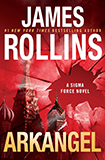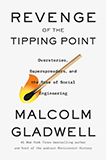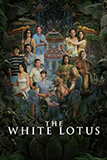Welcome to the very first installment of Bloggy Thursdays, where I share with my fellow bloggers tips and tutorials to maximize and better your blog. While I do not consider myself an expert, I do like to think that after 10+ years of blogging — in addition to my technical knowledge — I know more than the average blogger when it comes to making your blog more appealing to readers.
Do you have any comments, questions, or topics you’d like to see covered here? Please send me a message via my contact form. Enjoy!
I know that I said I will not be covering content in Bloggy Thursdays, but I have decided to make an exception for this particular topic. Because not only does it cover a (small) personal pet peeve of mine, it also goes back to the basics of writing — and in this case, blogging — on the internet.
Back in 1999, right after the web really took a stronghold in American society and everyone was IM’ing and chatting away on message boards, an author by the name of Timothy Campbell created a small website called The Internet Writing Guide. (The site, unfortunately, is no longer online.)
It was not a fancy site by any means, and taking a look at it via the Internet Archive Wayback Machine, you can see how simple and unobtrusive it was.
(Did anyone else notice the use of HTML frames? Oh, the horror! 😉 )
However, this small, 8-page site quickly became a favorite reference guide for millions of internet users, especially moderators of message boards whose job was to not only keep users in check, but to remain an example of proper internet writing.
I will not be regurgitating The Internet Writing Guide here. Rather, I will take from it a few key points which I believe help tremendously with a blog’s content — points that I try my best to employ every time that I sit down to write a post.

(image source)
Now, some of the bloggers reading this may be thinking, “But I’m a blogger. I already KNOW how to write.”
Yes, you may. And you may even be an excellent writer. But what you fail to realize is that writing for academia, work, and such is usually different from writing for an online audience.
The main difference in online works is that the average reader’s attention span and concentration shorten significantly online. Not only is your content competing with other online content, it needs to deal with real-world distractions too. Additionally, the glare of a computer screen is much more tiring on the eyes than paper.
So what exactly do you need to do to combat these problems?
- Keep it short and to the point. The Internet Writing Guide has an entire section devoted to brevity. I myself am guilty of this as I like to write verbose pieces that articulate exactly how I feel about a particular topic in the way of verbal diarrhea. (See what I did there? 😉 ) But always ask yourself — does my audience need to hear this?
- Break up blog posts with images and/or lists. This will give the reader’s eyes and mental processing a much-needed break, especially when the post is a long one. I always try to include at least one image with each blog post for this reason. (It also doesn’t hurt that it makes the post more visually appealing too!)
- Keep your paragraphs short. This is the small pet peeve mentioned above. I know that I’m not the only one who finds it hard to read loooong paragraphs online, especially when they are right next to each other. Once again, bear in mind that it is more difficult to read text on a screen than on paper. If you need to use long paragraphs, try to use a short paragraph — even if it consists of one brief sentence — right after it.
Along the same line, the use of one-sentence paragraphs can really help emphasize your points.
Other tips in The Internet Writing Guide, such as proper capitalization, spelling, and grammar, is a no-brainer. And I must admit that sometimes, being polite ALL the time does not always make for good blog content. 😉 But the rest — while written with message boards in mind — are very applicable to blogging.
And if you need more tips on writing? Go check out Strunk & White’s The Elements of Style. This book should play an essential part in any writer’s arsenal. As for online sources, you can’t go wrong with ProBlogger (check out their “Writing Content” category for more focused pieces on this subject).
I know that the contents of a blog are entirely up to its author and the author can choose to write whatever and however they see fit. But I guarantee that these small tips will help your blog posts be more appealing and better understood. And if you already use these tips? Good for you!
Do you have any additional blog content tips that should be added to this post?






 I like books, gadgets, spicy food, and art. I dislike shopping, hot weather, and the laws of entropy. Although I am a self-proclaimed computer nerd, I still have a love for handbags and makeup... and I am always teetering on high heels. To learn more about me, visit the
I like books, gadgets, spicy food, and art. I dislike shopping, hot weather, and the laws of entropy. Although I am a self-proclaimed computer nerd, I still have a love for handbags and makeup... and I am always teetering on high heels. To learn more about me, visit the 


excellent 🙂 thanks!
AGREE!
Can’t stand reading LOOOOOOOOOONG essay-type posts on-line. Won’t do it.
Thanks Jenny this is so helpful!!! 🙂 I do a lot of things wrong but this will help me in the future.
Excellent tips!
great tips. I very much agree. I prefer a post of all photos and no words, than one that is all words with no structure and no emphasis. I need clarity and brevity. I need focus. Headlines and bolding helps a lot as well.
I completely agree. It drives me crazy and I normally click off from a website when there is a long paragraph with no breaks. Your blog shouldn’t be a novel. I don’t mind long articles online as long as they’re broken up in short paragraphs.